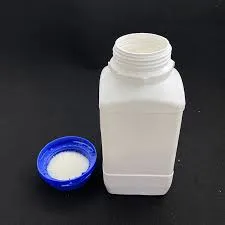Sodium rhodanide, also known as sodium thiocyanate (NaSCN), is an important compound in chemistry that plays a significant role in various industrial and laboratory applications. With its unique properties, sodium rhodanide has garnered attention in fields ranging from pharmaceuticals to agriculture.
Sodium rhodanide appears as a white crystalline solid that is highly soluble in water. This solubility is one of its primary advantages, allowing for easy manipulation and usage in various applications. Its chemical structure features a sodium ion bonded to a thiocyanate group, which consists of a sulfur atom bonded to a carbon and a nitrogen atom. This arrangement imparts distinct chemical properties that are beneficial in several contexts.
One of the noteworthy applications of sodium rhodanide is in the field of analytical chemistry. It serves as a reagent in the quantification and detection of certain metal ions. For example, it can form complex ions with metal ions such as iron, which can then be measured using spectrophotometry techniques. This property makes sodium rhodanide an invaluable tool for environmental analysis and quality control processes in various industries, including food and beverage production and environmental monitoring.
In the pharmaceutical industry, sodium rhodanide is used to synthesize various drugs and active pharmaceutical ingredients. Its role as a precursor in organic synthesis highlights its importance in creating complex molecular structures required for therapeutic compounds. The versatility of sodium rhodanide allows researchers and developers to explore novel drug formulations, particularly in chemotherapy where thiocyanate derivatives have shown potential in enhancing drug efficacy.
sodium rhodanide

Moreover, sodium rhodanide has agricultural applications, particularly as a herbicide
. Its efficacy in controlling unwanted vegetation showcases its usefulness in fostering agricultural productivity. Farmers can utilize sodium rhodanide to manage weed populations effectively, thereby supporting crop growth and maximizing yields. However, careful management and adherence to safety protocols are essential, as excessive use may lead to environmental harm or the development of resistant weed species.Another interesting aspect of sodium rhodanide is its role in the food industry. It acts as a preservative, inhibiting the growth of certain microbes that can spoil food. This function is critical in extending the shelf life of perishable items, ensuring food safety, and minimizing waste. As consumers increasingly demand longer-lasting food products without artificial additives, sodium rhodanide's natural properties present an attractive alternative.
Despite its numerous benefits, it is essential to handle sodium rhodanide with care, as it can be toxic in large quantities. Understanding the material safety data sheet (MSDS) for sodium rhodanide is crucial to ensure safe usage in both industrial and laboratory settings. Safety precautions, such as proper storage and the use of personal protective equipment (PPE), should always be observed.
In conclusion, sodium rhodanide is a multifaceted compound with a wide range of applications across various industries. Its unique properties make it an essential reagent in analytical chemistry, a vital component in pharmaceutical development, a helpful agricultural tool, and a practical food preservative. As research continues to uncover additional uses for sodium rhodanide, its significance in science and industry is likely to expand further, reinforcing its status as a compound of great value.

